In this edition, we speak with John Shanks – Antimicrobial Stewardship Pharmacist and co-founder of healthtech company Kraken Coding. In a newly announced DHCRC project, UTS is undertaking a research study into the roll out of Kraken Coding’s antimicrobial stewardship decision support tool in Western Australia.
Tell us about your journey into antimicrobial stewardship?
I worked for over a decade with the Northern Territory Government. Firstly, as a junior clinical pharmacist and later as an antimicrobial stewardship pharmacist. It was in this role that I took on the challenge of trying to change prescribing practice through education. And that was quite difficult in the Northern Territory as we covered a wide area and had quite a transient workforce. It was clear we needed a tool but there was nothing commercially available, and we didn’t have any budget, so we built a simple pathways tool in HTML, and we implemented that across the five hospitals in the Northern Territory.
With this proven approach, we released this tool as an Open Source application, allowing clinicians to freely use, and also to add, and share, their own pathways. At its peak, it was in 15 hospitals across Australia and what we saw from this was pretty positive outcomes and a reduction in broad spectrum anti microbials. However, as an open source model it was just not sustainable long term.
So that lead to the founding of Kraken Coding?
Yes, we saw there was a clear need, but it required a more robust support tool that actually saved clinicians time and helped them make informed decisions.
Classically, the tools that were available allowed the prescriber to select an antibiotic and then justify their choice. Whereas I don’t think that’s going to drive behaviour change because you’ve already made a decision. I think like really you have to say, OK, these are my patient characteristics, what should I use and then it will step you through the process.
So, I learned to code, it took a two year sabbatical, and really worked on building something which was an open framework that gives clinicians the ability to build pathways with a drag-and-drop canvas, without needing any coding experience.
Tell us about the research project you’ve just unveiled with the DHCRC
It is a collaboration between DHCRC, WA Country Health Service (WACHS) and University of Technology Sydney (UTS) to evaluate our antimicrobial stewardship decision support tool, what WACHS refers to as Antimicrobial Pathways (AMPs). This was piloted in Geraldton in 2022 and during the one year pilot they saw some really big improvements in their antimicrobial appropriateness and their broad spectrum antimicrobial usage. So now the tool has been rolled out across 46 hospitals, servicing 530,000 patients, throughout Western Australia
This research project with the DHCRC and UTS is critical to investigate the effects and impact of the new platform on antimicrobial prescribing on such a large scale.
What does this platform do for clinicians?
Clinicians are really time poor and so you want to make things very quick. The average time for a pathway at the moment is 48 seconds to complete from start to finish.
More than just time saving, I would also say it reduces the cognitive load on clinicians, helping to avoid burnout.
An important distinction here is that it is not a restriction platform, it is an enablement platform. People aren’t an expert on everything, and nobody wants to make the wrong decision. Our platform actually helps clinicians get to the right choice, quicker. And ultimately that is going to help to improve care.
And this is just the beginning for Kraken Coding, right?
Yes, for sure. Antimicrobial stewardship is my background and my passion but equally the use cases for this type of decision support tool in healthcare are nearly endless. We’re already thinking about diabetes, cardiovascular disease and even maternity. We can build out decision support branches for everything.
That is one reason all the team at Kraken Coding continue to be practicing pharmacists and clinicians. We don’t want to lose that touch point where we see the challenges first-hand and are able to identify, and build, solutions that we know will work in practice. This is a tool built by clinicians for clinicians.

